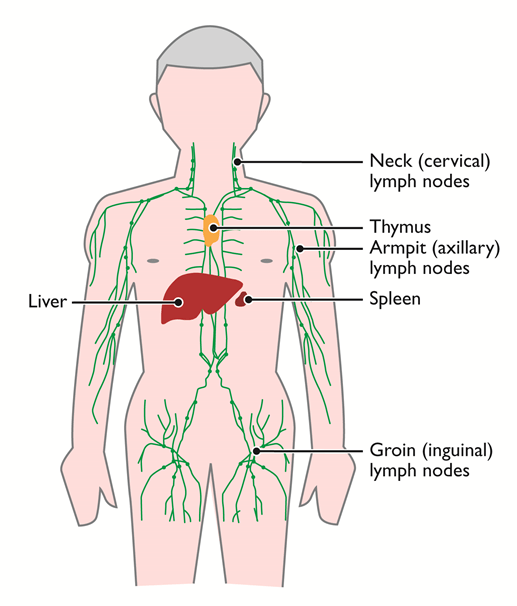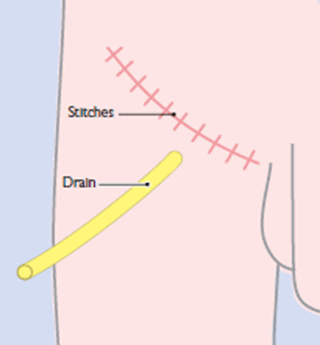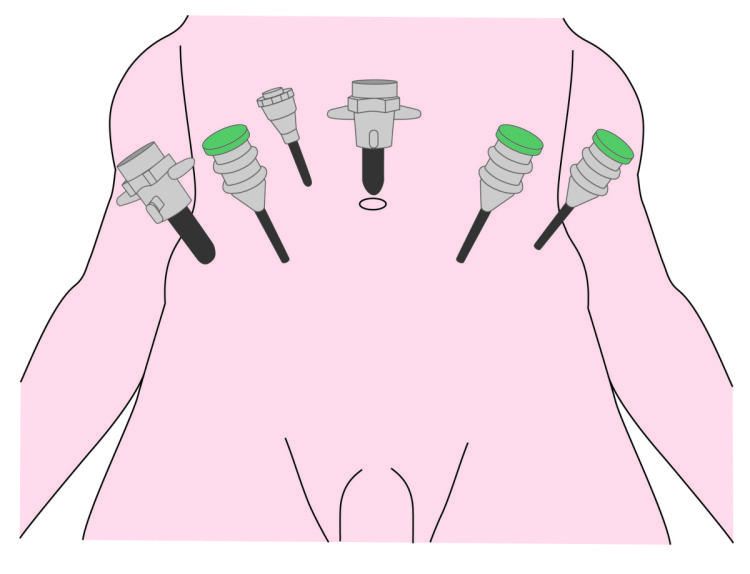Lymph Node Dissection
The Lymphatic System and Lymph Nodes The lymphatic system transports a fluid called lymph. Lymph will contain various cells and substances that the body no longer needs and passes through small oval structures called lymph nodes. These filter out unwanted substances. Cancer can travel in lymph and can spread to other areas of the body.

Inguinal Lymph Node Dissection
This involves removing the lymph nodes from one or both sides of the groin. It is performed under a general anaesthetic and may take 2 – 3 hours. A cut is made into the groin and lymph nodes are removed for laboratory analysis. Blood or fluid can sometimes collect around the operation site. To prevent this from slowing the healing process, a small plastic tube called a wound drain may be inserted near to the operation site to allow this fluid to drain away. It is usually removed after 2 weeks but may need to remain in place longer (see picture below).

Pelvic Lymph Node Dissection
This operation is used to remove lymph nodes from the pelvic area. It is commonly performed by laparoscopic surgery (keyhole surgery, see picture below). Blood or fluid can sometimes collect around the operation site and to prevent this from slowing the healing process, a small plastic tube called a wound drain may be inserted near to the operation site to allow this fluid to drain. It is usually removed after 2 weeks but may need to remain in place longer. Recovery from this operation will take longer than groin surgery.

After surgery
- Painkillers should be taken as prescribed on a regular basis.
- It will take some time for your body to fully recover from this operation and you will need to avoid strenuous activity for 4 – 6 weeks after surgery.
- A well-balanced, high protein diet will help the wound heal.
- A nurse may visit you at home and check that the operation site remains clean and healthy.
- The wound will have stitches which will gradually dissolve, this may take up to a month.
- You may have a urinary catheter placed into your bladder to allow urinary drainage. Information about urinary catheters can be found here.
Lymphoedema
Surgery to the groin or pelvic lymph nodes can reduce the drainage of lymph which will cause swelling in the groin, legs, and the scrotum and is called lymphoedema. Lymphoedema can cause pain and discomfort and will need to be treated by the medical team. Most lymphoedema can be managed and may improve over time, but sometimes it will affect men for life. More information on lymphoedema can be found here.

Reviewed November 2023
